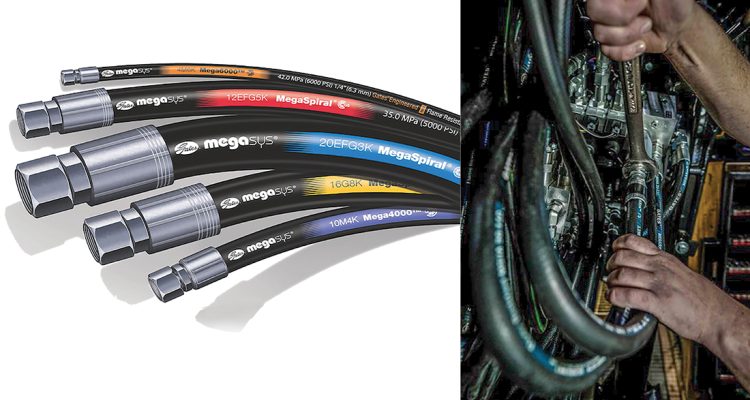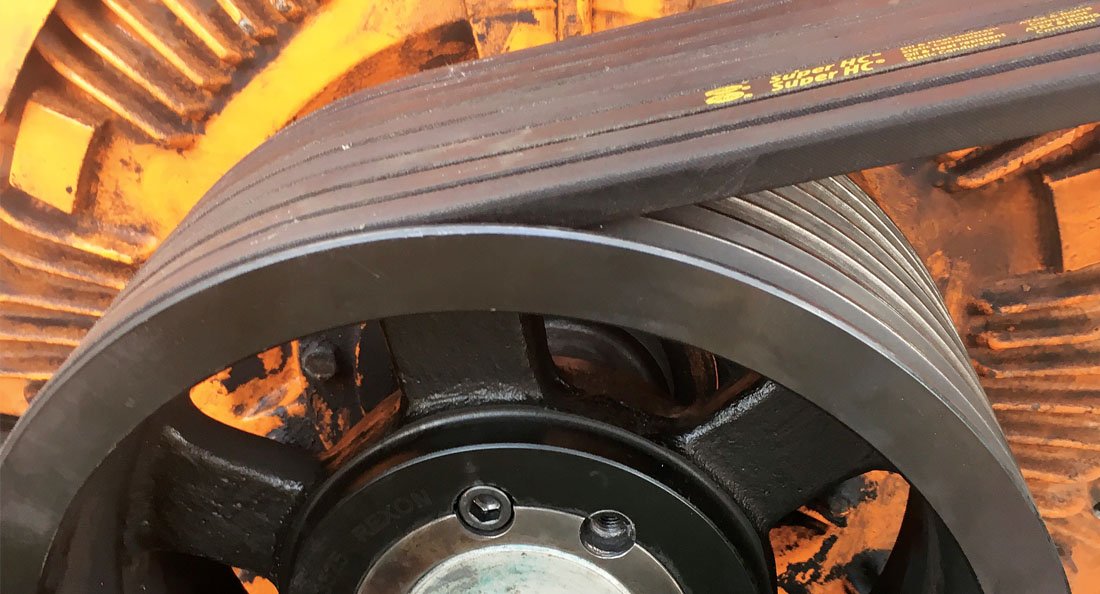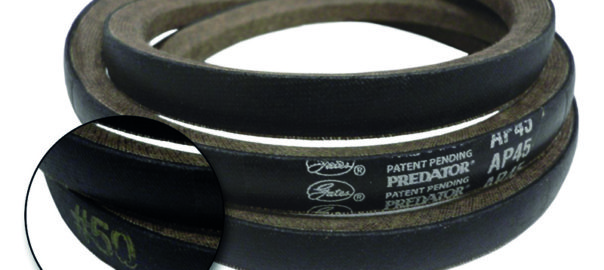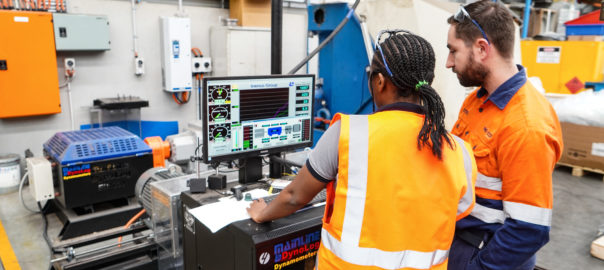The inside of fluid power machinery is complex, and subject to some of the harshest conditions on mining sites. To address this, Gates® has designed a fit-for-purpose range of industrial-grade hoses, ideal for transporting water and emulsions between hydraulic components.
The Megasys® portfolio offers increased performance and flexibility, facilitating peak plumbing and routing in compact applications. Capable of reducing expenditure by up to 64 per cent, they are easy to install and require fewer bent tube fittings. With such diverse capabilities within the range, it’s important to select the most suitable hose for each individual system.
Understanding hose identification
The Gates® Megasys® range is separated into two main categories:
Wire-braid hose – M3K, M4K, M5K, M6K, MXT, MXT-XTP
These are constructed using high-tensile steel wire and are tested to 600,000 cycles.
Spiral-wire hose – EFG3K, EFG4k, EFG5k, G8K
These are constructed from four to six alternating layers of spiralled, high tensile steel, and are tested to up to one million impulse cycles.
Xpiral hose – MXG4K-XTP, MXG5K-XTP
Built with Gates patented Xpiral™ woven spiral technology, MegaSys MXG™ 4K/5K hydraulic hose is lightweight, highly flexible and qualified to one million impulse cycles. MXG™ 4K/5K exceeds the performance of wire spiral constructions, but with the lower weight and flexibility driven by Gates materials science technology.
Identification laylines are printed along the side of each product, and are used to communicate critical information about its specifications. This offers increased efficiency for purchasing or organising stock on site. In addition, hoses in the MegaSys® line are distinctly colour-coded to quickly and easily view pressure ratings.
• YELLOW: 8,000 PSI, G8K
• ORANGE: 6,000 PSI, EFG6K
• RED: 5,000 PSI, M5K/EFG5K/MXG5K-XTP
• PURPLE: 4,000 PSI, M4K/EFG4K/MXG4K-XTP
• BLUE: 3,000 PSI, M3K/EFG3K
Alongside the respective colours, each hose description label will list the I.D number, bend radius, psi working pressure, SAE and European standards, and important features such as flame resistance.
Checklist for suitability
To makes things easy to remember, Gates® recommends using the STAMPED method for running through hose selection criteria:
S = Size
T = Temperature
A = Application
M = Material to be conveyed
P = Pressure
E = Ends or couplings
D = Delivery (volume and velocity)
1. Size
The inside of a hose diameter can vary, and must align with pressure requirements to avoid excessive turbulence. If possible, check the printed measurement on the side of the old hose that needs replacing. If this has worn off, cut the original hose and carefully measure the internal diameter to match up with the new product.
2. Temperature
Both fluid and ambient temperature need to be considered when putting together a new hose assembly. The selected product must withstand the minimum and maximum temperatures that it will experience in service.
3. Application
Noting where and how the hose assembly is going to be installed will help to determine an optimum selection. Some questions to ask in this process are:
• What is the fluid compatibility?
• What are the environmental conditions and potential risks?
• What are the routing requirements?
• Are the government and industry standards being met?
• Are there unusual mechanical loads?
• Is a non-conductive hose required?
4. Material to be conveyed
Ensure that the hose tube, cover, couplings, and O-rings are compatible with the water, oil emulsions, or glycol solutions being used. Take care in this selection where gases are present.
5. Pressure
Noting the system pressure is one of the most important steps. The published working pressures must be equal to or greater than the relevant system pressure rating. If the hose experiences pressure spikes beyond this, the product life will shorten, so this is not recommended.
6. Delivery (volume and velocity)
Proper sizing of transport efficiency can be ensured by checking the original hose I.D. against the new one. If any relevant aspect of the system has since changed, use the Nemographic Chart to make an exact measurement.




